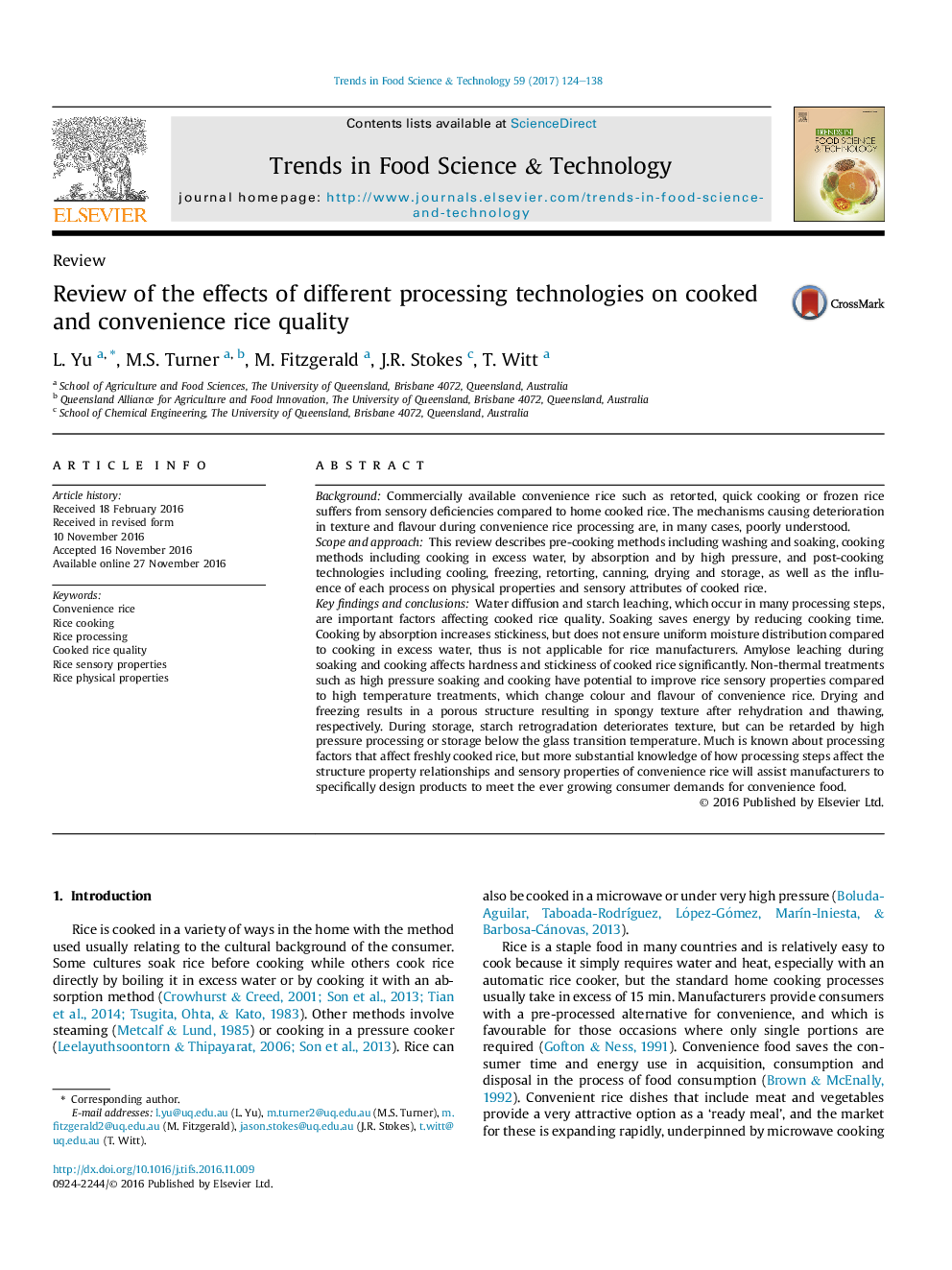| کد مقاله | کد نشریه | سال انتشار | مقاله انگلیسی | نسخه تمام متن |
|---|---|---|---|---|
| 5523765 | 1546120 | 2017 | 15 صفحه PDF | دانلود رایگان |
- Processing related reduction of convenience rice quality is mechanistically explained.
- Flavour deteriorates as volatile profiles are altered by thermal processes and storage.
- Cooked rice texture is dependant on the rate and extent of water and starch diffusion.
- Different mechanisms in high pressure processes may improve convenience rice quality.
BackgroundCommercially available convenience rice such as retorted, quick cooking or frozen rice suffers from sensory deficiencies compared to home cooked rice. The mechanisms causing deterioration in texture and flavour during convenience rice processing are, in many cases, poorly understood.Scope and approachThis review describes pre-cooking methods including washing and soaking, cooking methods including cooking in excess water, by absorption and by high pressure, and post-cooking technologies including cooling, freezing, retorting, canning, drying and storage, as well as the influence of each process on physical properties and sensory attributes of cooked rice.Key findings and conclusionsWater diffusion and starch leaching, which occur in many processing steps, are important factors affecting cooked rice quality. Soaking saves energy by reducing cooking time. Cooking by absorption increases stickiness, but does not ensure uniform moisture distribution compared to cooking in excess water, thus is not applicable for rice manufacturers. Amylose leaching during soaking and cooking affects hardness and stickiness of cooked rice significantly. Non-thermal treatments such as high pressure soaking and cooking have potential to improve rice sensory properties compared to high temperature treatments, which change colour and flavour of convenience rice. Drying and freezing results in a porous structure resulting in spongy texture after rehydration and thawing, respectively. During storage, starch retrogradation deteriorates texture, but can be retarded by high pressure processing or storage below the glass transition temperature. Much is known about processing factors that affect freshly cooked rice, but more substantial knowledge of how processing steps affect the structure property relationships and sensory properties of convenience rice will assist manufacturers to specifically design products to meet the ever growing consumer demands for convenience food.
Journal: Trends in Food Science & Technology - Volume 59, January 2017, Pages 124-138
